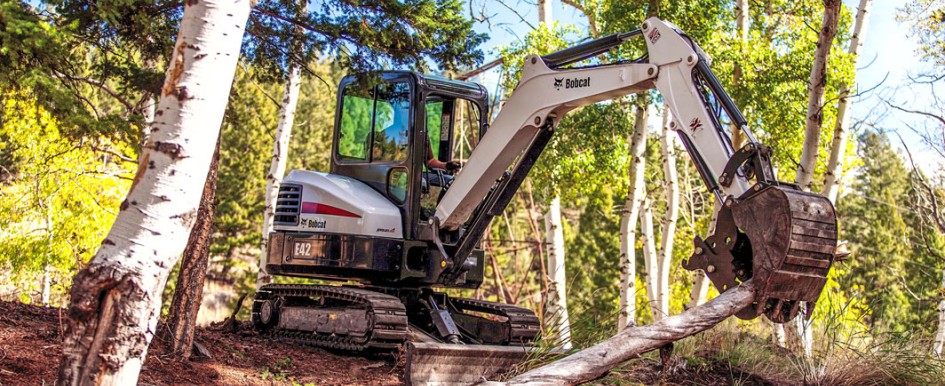
With some jobsites getting tighter, particularly in urban areas, contractors rely on compact equipment that can access confined spaces and still have the power to get the job done efficiently. Today’s compact excavators are designed to overcome challenges when working in confined spaces where larger equipment cannot fit. This is evident by the dramatic increase of compact excavators in the past 30 years, replacing many tasks previously done with loader backhoes. Demand for compact excavators doesn’t appear to be slowing down anytime soon. Before bidding on a project and working in confined areas, evaluate the following considerations.
1. Scope Out the Jobsite
When working in tight spaces, it’s important to consider the type of work your operators are completing and the jobsite on which they are working. Contractors gravitate toward compact equipment that delivers exceptional performance and attachment versatility on jobsites. Measure widths between permanent structures and gate or door openings to ensure your compact equipment can easily travel in between or through openings. Instead of a single backhoe loader on a project, it’s more common to find two machines—a compact track loader and a compact excavator. These machines can work in tandem, to perform excavating or grading projects faster than backhoe loaders. If you’re working in established residential neighborhoods with exceptionally narrow passages, some compact equipment manufacturers offer compact excavators with retractable undercarriages. This feature allows you or your operators to retract the excavator’s undercarriage, pass through a gate and then expand the undercarriage before working. Another benefit of compact equipment is its rubber-tracked undercarriage, minimizing damage to established surfaces and time spent after a project’s completion to replace or repair surfaces.
2. Don’t Forget Tail-Swing Configurations
Today’s compact excavator market includes a variety of tail-swing types, depending on the jobsite requirements. Tail-swing types include: conventional, minimal and zero tail. Minimal tail-swing and zero-tail-swing excavators provide more unrestricted rotation and flexibility when working close to objects or against a wall. The zero-tail-swing feature virtually eliminates the chance of the excavator’s tail (house) inadvertently contacting surrounding objects and potentially damaging the structure and machine. The minimal-tail-swing feature significantly reduces the chance of inadvertent contact, minimizing the likelihood of damage to nearby objects or structures. A zero- or minimal-tail-swing excavator of a given size will generally be wider than its conventional tail-swing counterpart. If you anticipate routine work where your operators must pass through narrow property lines or gates, a conventional tail swing may be a better fit. The typical width of a conventional tail swing will be about 60 inches, whereas a zero- and minimal-tail-swing excavator with similar performance will have a width of about 70 inches.
3. Consider Arm Lengths
Some manufacturers offer different excavator arm configurations to provide additional dig depth and reach without moving up to a larger size class. A long arm or extendable arm may give operators the extra reach they need to trench, load a truck or pile spoil further away from an excavation.
4. Make the Most of Your Attachments
Don’t overlook the importance of doing more than digging with an excavator. Replace work previously done with manual labor by purchasing or renting an attachment for occasional use. For example, when removing concrete, add a hydraulic breaker to demolish the material. Add a hydraulic clamp for land-clearing applications to quickly grab, lift and load materials. Make the most of your excavator, especially when working in tight spaces.
Know Your Excavator Trailer Requirements
Make sure you are in compliance with your local authorities when you transport your compact excavator. Proper hauling practices will help minimize loading issues that may be out of compliance and slowing your productivity. All states and local municipalities have regulations based on gross vehicle weight rating (GVWR)—the maximum operating weight or mass of a piece of equipment as specified by the manufacturer. Load ratings may vary by state and season. Keep abreast of federal, state and local laws and regulations regarding weight, width, length and height of a load before preparing to transport your machine.
